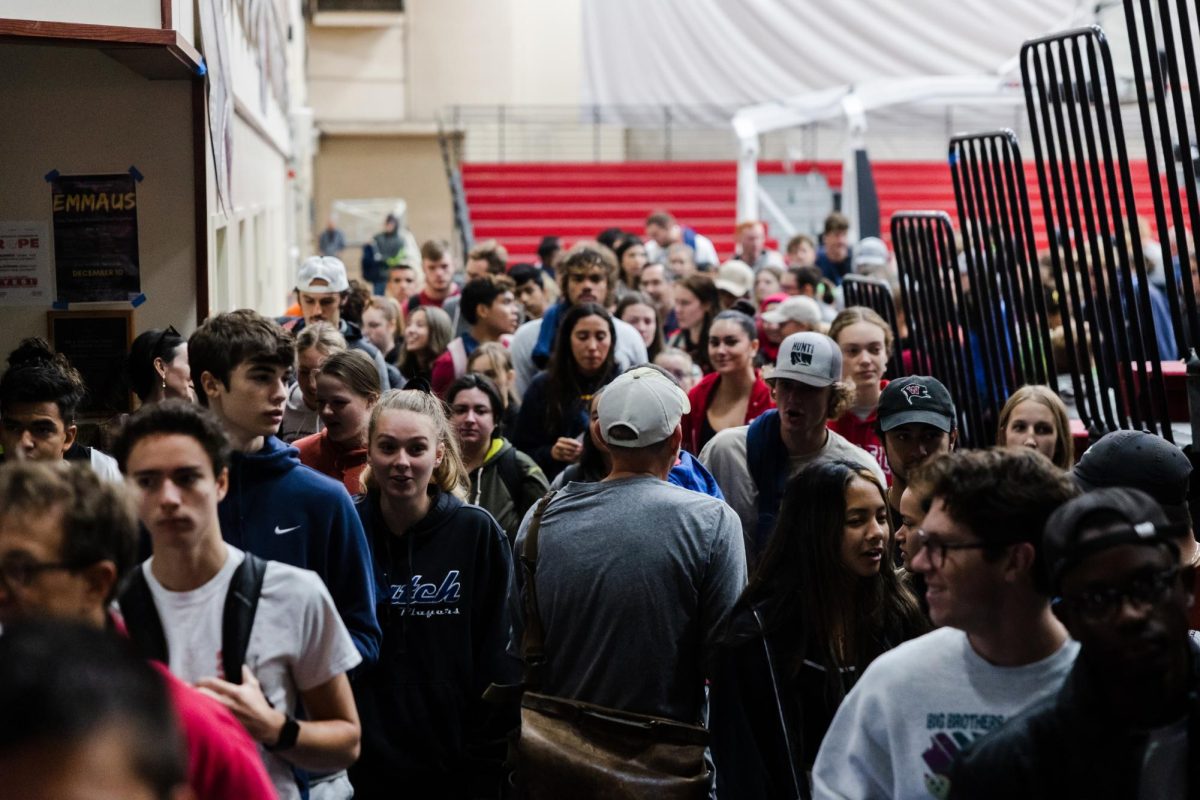Reading through a syllabus for Whitworth class, students are likely to find a statement about cell phone usage during class. Normally, they’re to the tune of “keep it out of sight and turn it on silent.”
Smartphones have all the features of the traditional cell phone, including text messaging, taking photos and jotting down important reminders. Most have wifi functionality, allowing a user to check their email and surf the internet abroad. This can be useful for the student on the go.
”My syllabus says manage your electronic devices with respect and maturity,” said Joy York, associate professor of communications. “If you have to take a call, send a text, whatever, just go ahead and leave, then come back.”
If the smartphone is a student’s preferred method of taking notes, class policy can pose a problem. For York, a text is the same as a call in that it can be just as distracting, but she said she is more flexible about cell phone usage in class than what she sets forth in her syllabus.
“I think the reason why I’m fine with it in the classroom is because it hasn’t gone over what is excessive. What I see is students are pretty aware that when they’re texting, they’re not present,” York said. “They get it.”
A recent study conducted at Wilkes University reported that nine out of 10 college students admit to texting in the classroom. In a survey conducted at the University of New Hampshire, a little over half the respondents said that cell phone usage affected the amount of information received during class.
The survey did not specify whether the students gained more information or less, although the results do indicate that cell phones still pose a problem for the easily distracted.
Steve Outing, director of the Digital Media Test Lab at the University of Colorado, is experimenting with incorporating cell phones into his class curriculum. He is doing so in part to prevent students from being distracted by the devices.
“For my class, I have students tweet at least twice a week, or if they hear something really insightful in class they are allowed to tweet about it. I believe that if you give students something to do with their phones during class, it’s harder for them to do other things on it, like check Facebook,” Outing said.
However, Outing said, he is hesitant to make smartphones a class requirement.
“Accessibility is an issue that could prevent smartphones from being integrated into the curriculum.They’re becoming more common, but not all students own smart phones,” Outing said. “It wouldn’t make sense to make something a requirement for a class if not everyone has access to it.”
The latest smartphone models can fall anywhere between $100-$300, not including monthly subscription fees. In places where wireless internet is not available, smartphone users have to download data from their carrier network. Such plans often have a limit to the amount of data that can be used on a monthly basis, with potential fines for going over.
Ken Brown, Whitworth’s Director of Information Services, said that the Whitworth is already planning on making Whitworth’s online resources more mobile friendly, and more accessible.
“A Pirate Port for mobile devices is in the works, although it will be some time before it can be used,” Brown said. “The information services department prioritizes helping students with their PC’s. Smartphones and tablets usually don’t have as many problems connecting to Whitworth’s wifi.”
For those who can afford the monthly charges, an array of third party applications are available to students aimed at making academic life easier, both in and out of the classroom. For example, Evernote, a note taking app for tablets and smartphones, is a free note-taking application. Users can take notes on their tablet, computer, or smartphone, and the notes will automatically back up to Evernote’s online servers.
Evernote’s Student Ambassador Megan Otter said she’s one of Evernote’s biggest fans. As a sophomore at the University of Pittsburgh, Otter became a volunteer Evernote Ambassador after discovering how the app could help her declutter her student life.This semester, Otter has no need for binders or notebooks, and is living a “paperless” life.
“I carry around a moleskine notebook and my iPad, and that’s all that I carry around with me for my classes,” Otter said. “Even though teachers give me papers, I come home at the end of the day, and I automatically scan everything into Evernote. I take pictures of everything I can take pictures of, and then I recycle all of that paper.”
Otter said that the smartphone-tablet gap in classroom policy doesn’t make much sense to her.
“Professors might allow a laptop or tablet, but for whatever reason, it’s seen as different from a smartphone,” Otter said. “I can understand that perspective, but at the same time, if you are looking at someone who has an iPhone and an iPad, you can get all of your texts on your iPad. It can be just as big of a distraction.”
Contact Lucas Thayer at lthayer12@my.whitworth.edu.







 Spokane?
Spokane?